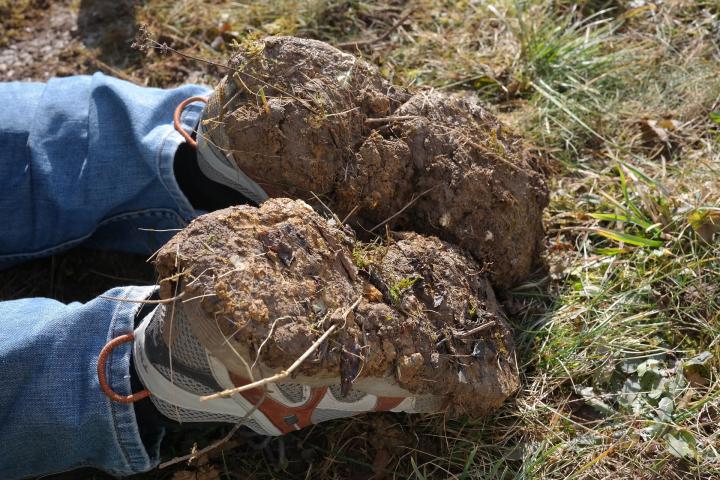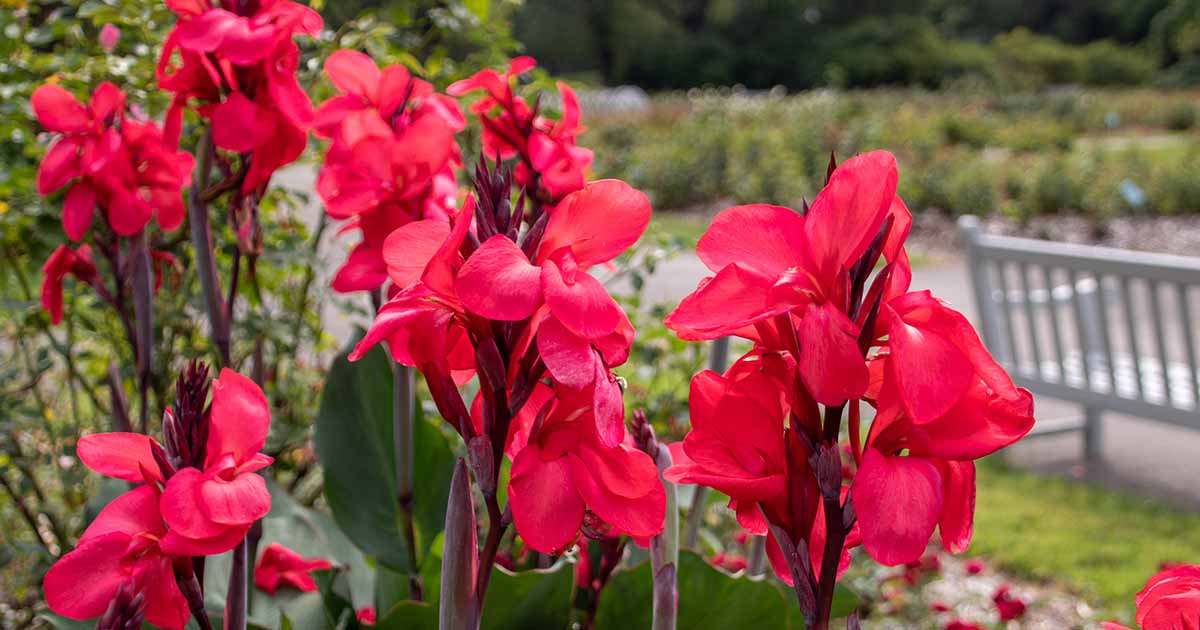Sticky. Heavy. Soggy. Crusty. Not a band of wayward Disney dwarves but instead words used by gardeners to describe their clay soil! While clay soil has its challenges, it also has its positives. Let’s focus on how to improve clay soil—and dispel some misperceptions.
A good garden, like a good life, is all about balance and this is especially true when it comes to the texture of your soil. Let’s quickly review the different types of soil textures.
Soil Texture
Soil is made up of three types of particles mixed with organic matter. An extreme amount of any one of these elements is not good. Ideal soil would have equal amounts of sand, silt, and clay.
- Sand particles are the largest. They are somewhat round with large spaces between them for air, water, and nutrients to flow. Sandy soil drains fast, dries out quickly, and doesn’t hold moisture. To give you an idea of just how big they are, 1 gram of sand has about 1,000 grains.
- Silt particles are a little smaller than sand. Water sometimes has trouble penetrating dry, silty soil causing rain to run off instead of sinking in. Once saturated, silt holds moisture better than sand does.
- Clay particles are the smallest, are flat and are easily compacted. There is little to no space between them for air or water to flow. Slow to drain, dry out, or warm up, clay soil holds water well once it is wet—often to the point of being waterlogged. When dry, clay shrinks and cracks, forming a brick-like surface that is almost impenetrable. One gram of clay has about 90 billion particles!
One way to tell if you have soil that’s heavily clay is to form damp soil into a ball; if you can do this easily without the soil crumbling, then it’s probably clay! Clay soil

When dried out, clay soil has a tendency to form a brick-like crust that only the toughest weeds can penetrate.
Soil Structure
Some gardeners think that by adding sand to their clay soil it will “cure” the problem but it actually is more like a recipe for making cement! You can’t change the texture of your soil but you can improve its structure.
- Add organic matter and compost to help drainage and lighten heavy soil. Humus particles are much larger than clay and they will attach themselves to the finer particles to form clusters called aggregates. These larger aggregates create spaces for water, air, and nutrients to flow to plant roots. Humus also absorbs moisture and drains it quickly. The more organic matter you can add the better: 5 to 10% is ideal. Along with compost, leaf mold and aged manure are also great sources of organic matter.
Before planting in spring, add compost and aged manure. A 2- to 3-inch layer worked into the soil to shovel depth is a good amount. Be sure to add at least a few weeks before planting to allow the material to break down.
- Use mulch to help reduce compaction of your clay soil from hard rainfall. It also prevents the soil from drying out and cracking. Organic mulch like straw or shredded leaves encourages worms and other soil organisms to live below it where they create tunnels which aerate the soil.
Throughout the growing season, keep adding mulch to your soil with grass clippings, shredded leaves, and/or straw. Also, mulch beds over the winter with a layer of straw or organic matter to protect the soil from driving rain and erosion.
- Plant cover crops to stabilize the soil, reducing erosion and loss of precious topsoil. Vigorous root systems found in many cover crops help to break up compacted soil and create deep channels. In the north, winter wheat and winter rye are popular choices; in warmer regions, crimson clover and oats are commonly used.
Sow your cover crop in the fall after the last crops have been harvested. The following spring, simply till the plants into the soil, adding yet more precious organic matter.
- Reduce cultivation. Once permanent beds have been established they will need minimal digging. The more you dig the more risk you take of destroying the soil structure you have worked so hard to improve.
- Plant in blocks to shade the soil and keep it from crusting over.
- Don’t walk on or work with wet muddy soil. The more compacted it gets, the fewer spaces for air, water and nutrients to pass through where roots can access them. One idea is to put down wooden boards on garden paths,
Make sure you garden rows aren’t more than a few feet across so that you can reach the middle without stepping in the bed.
- Plant in raised beds which improve drainage by encouraging water to run off. The beds don’t have to be made out of wood or stone; even a simple raised mound of soil will help.

Walking on wet clay soil is not good for the garden or for your shoes!
Plants for Clay Soil
It may also be worth considering the plants that grow better in clay soil, as you work to improve it.
Trees and Shrubs:
Birch
Hawthorn
Viburnum
Cotoneaster
Rosa
Buddleja
Hydrangea
Dogwood
Weigela
Forsythia
Perennial Flowers:
Hosta
Aster
Rudbeckia
Coreopsis
Phlox
Hellebores
Anemone
Geraniums
Climbers:
Ivy, Clematis, Honeysuckle
Bulbs:
Narcissi, Snowdrops
We hope this works. And don’t despair if you are struggling right now! With plenty of compost and good management, you can turn your brickyard into a richly productive garden.











